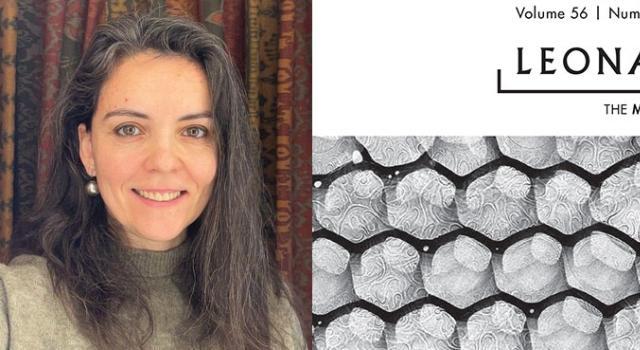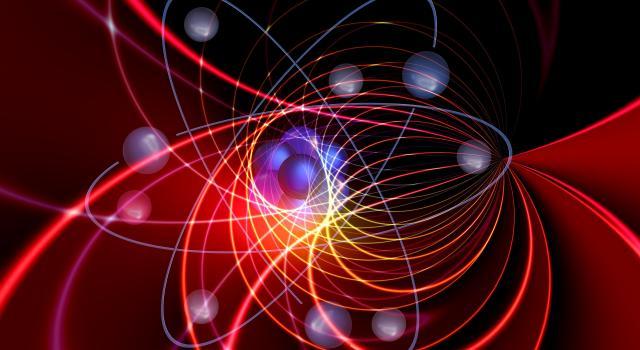Physics
Hampshire's academic structure allows students to incorporate physics into a variety of concentrations (music, education, or architecture, for example) and to pair a more standard physics curriculum with courses in areas like assistive technology or studio arts.
Student Project Titles
- Monte Carlo Simulation of the Quark-Gluon Plasma
- Building and Playing Keyboard Instruments
- A Preparation for Graduate Physics
- Cosmology: Where Are We?
- Design and Construction of a Singing Tower
- The Gravity Machine
- Inquiry and Problem-Based Learning: Slippery Slopes, Wheelchair Design for a High School Mechanical Physics Unit
- Living, Learning, Observing and Creating
- Memories of Lightness and Weight
- Mobility and Communications
- Sustainable Design, Technology and Waste Management
Sample First-Year Course
How Things Work
This course introduces students to college physics, projects, projects, and science through study of ordinary technological objects. Principles flow from everyday applications in mechanics, electricity and magnetism, and electronics and optics; eventually we may even make our own simple "paper clip" motors that run for hours on a single D battery. The mathematics level is algebra to precalculus. We also steadily build an individualized project, which may have been previously started in some other learning activity. This covers the five elements of a complete natural science experience including quantitative and verbal skills, the methods of scientific inquiry, and the importance of social context, all as applied to the topic of your own choice.
Sample Courses at Hampshire
- Animals, Robots, and Applied Design
- Astrophysics of Stars and Galaxies
- Bicycle Design and Beyond
- Calculus in Context
- Creative Electronics
- Design Fundamentals
- Earth Resources
- How Things Work
- Look Ma, No Hands
- Linear Algebra
- Math and the Other Arts
- Optics and Holography
- Physics I: Introduction to Classical Mechanics
- Physics II
- Quantum Mechanics for the Myriad
Through the Consortium
- Conceptual Physics (UMass)
- Dynamics (AC)
- Electricity and Magnetism (SC)
- Force, Motion, andEnergy (MHC)
- Foundations of Physics (MHC)
- General Physics I and II (SC)
- Methods of Theoretical Physics (AC)
- Newtonian Synthesis (AC)
- Quantum Mechanics (AC)
- Relativity (UMass)
- Seeing the Light (UMass)
- Thermal Physics (SC)
- Waves and Particles (MHC)
- Writing in Physics (UMass)
Facilities and Resources
Institute for Science and Interdisciplinary Studies
The Institute for Science and Interdisciplinary Studies was founded in 1992 to analyze and incorporate the influences of history, politics, economics, and culture into the study of science and technology. The Institute works to reconnect scientists with communities so that research is developed collaboratively to address such complex and pressing problems as environmental degradation, economic crises in agriculture and industry, providing effective health care, and toxic and nuclear waste disposal. With programs combining technical assistance, coalition building, education, original scientific research and writing on the foundations of knowledge, The Institute is developing a new way of doing science that is open, self-reflexive, democratic, and socially responsible. More information is available at interdisciplinary.org.
Quantum Physics Project
The Institute's Quantum Physics Project, funded by the National Science Foundation, coordinated the research group that produced a most direct disproof of local realism in quantum physics, the Greenberger/Horne/Zeilinger (GHZ) Theorem. In addition to studying entangled states and teleportation, the project incorporates research on "Quantum Computers" by Hampshire professors Lee Spector and Herb Bernstein. Bernstein is also the founding co-organizer, with HWS professor Don Spector (no relation) of the Anacapa Society, housed at Amherst College, a national organization to support, promote, and develop first-rate theoretical physics research in undergraduate colleges. Herb's latest research on SuperDense teleportation is being developed by NASA for space communication.
Five College Astronomy Department
The Five College Astronomy Department links the teaching and research programs on each of the campuses, offering a richer environment for doing astronomy than would be possible if each operated independently.
Moreover, by combining the traditional emphasis on small classes and individual attention that is found at small liberal arts colleges with the research opportunities and infrastructure of a large university, students can find a mix of fine teaching and rich opportunities for independent research.
Some ten percent of the professional women astronomers in the U.S. did their undergraduate work in the Five College Astronomy program.



